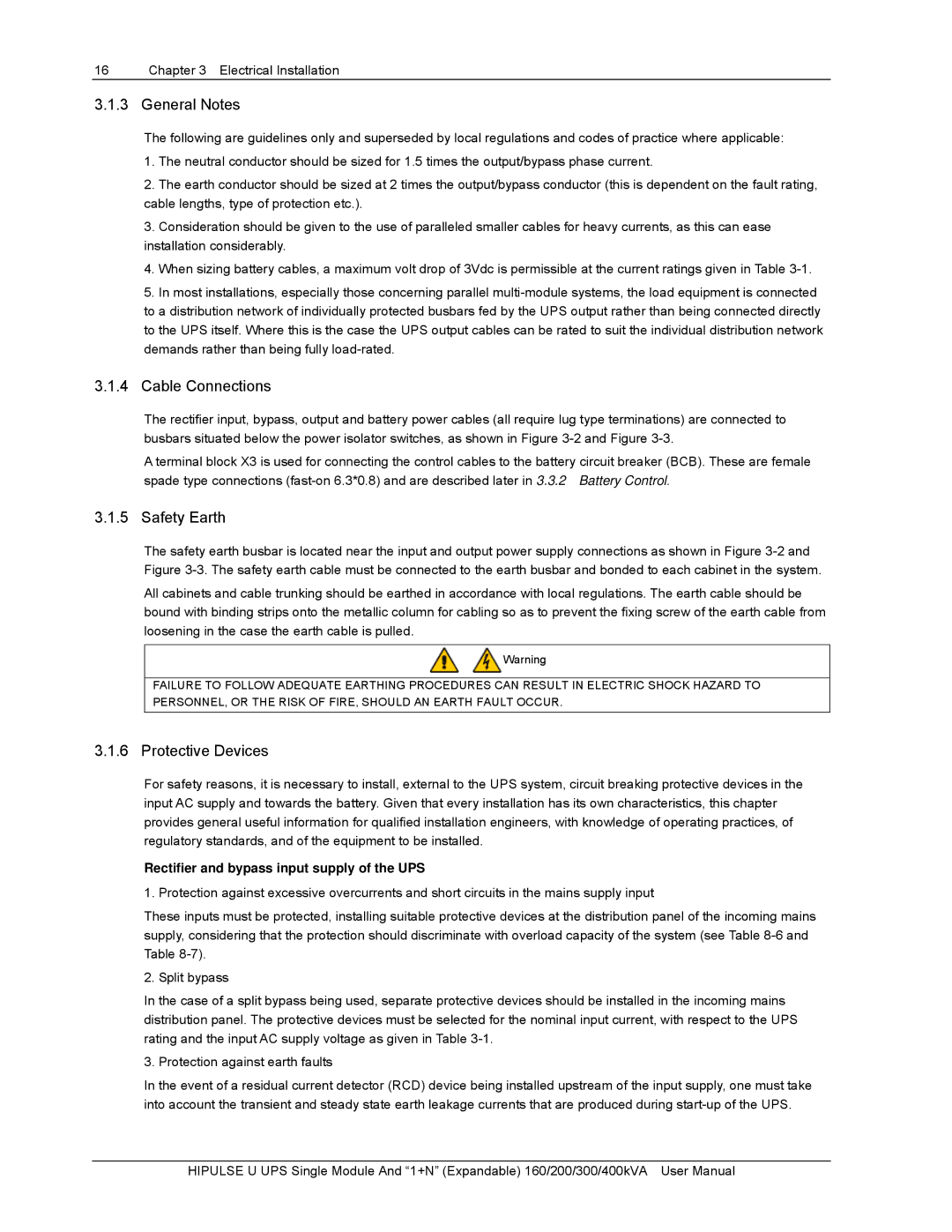
16 | Chapter 3 Electrical Installation |
3.1.3 General Notes
The following are guidelines only and superseded by local regulations and codes of practice where applicable:
1.The neutral conductor should be sized for 1.5 times the output/bypass phase current.
2.The earth conductor should be sized at 2 times the output/bypass conductor (this is dependent on the fault rating, cable lengths, type of protection etc.).
3.Consideration should be given to the use of paralleled smaller cables for heavy currents, as this can ease installation considerably.
4.When sizing battery cables, a maximum volt drop of 3Vdc is permissible at the current ratings given in Table
5.In most installations, especially those concerning parallel
3.1.4Cable Connections
The rectifier input, bypass, output and battery power cables (all require lug type terminations) are connected to busbars situated below the power isolator switches, as shown in Figure
A terminal block X3 is used for connecting the control cables to the battery circuit breaker (BCB). These are female spade type connections
3.1.5 Safety Earth
The safety earth busbar is located near the input and output power supply connections as shown in Figure
All cabinets and cable trunking should be earthed in accordance with local regulations. The earth cable should be bound with binding strips onto the metallic column for cabling so as to prevent the fixing screw of the earth cable from loosening in the case the earth cable is pulled.
![]() Warning
Warning
FAILURE TO FOLLOW ADEQUATE EARTHING PROCEDURES CAN RESULT IN ELECTRIC SHOCK HAZARD TO PERSONNEL, OR THE RISK OF FIRE, SHOULD AN EARTH FAULT OCCUR.
3.1.6 Protective Devices
For safety reasons, it is necessary to install, external to the UPS system, circuit breaking protective devices in the input AC supply and towards the battery. Given that every installation has its own characteristics, this chapter provides general useful information for qualified installation engineers, with knowledge of operating practices, of regulatory standards, and of the equipment to be installed.
Rectifier and bypass input supply of the UPS
1. Protection against excessive overcurrents and short circuits in the mains supply input
These inputs must be protected, installing suitable protective devices at the distribution panel of the incoming mains supply, considering that the protection should discriminate with overload capacity of the system (see Table
2. Split bypass
In the case of a split bypass being used, separate protective devices should be installed in the incoming mains distribution panel. The protective devices must be selected for the nominal input current, with respect to the UPS rating and the input AC supply voltage as given in Table
3. Protection against earth faults
In the event of a residual current detector (RCD) device being installed upstream of the input supply, one must take into account the transient and steady state earth leakage currents that are produced during
HIPULSE U UPS Single Module And “1+N” (Expandable) 160/200/300/400kVA User Manual
